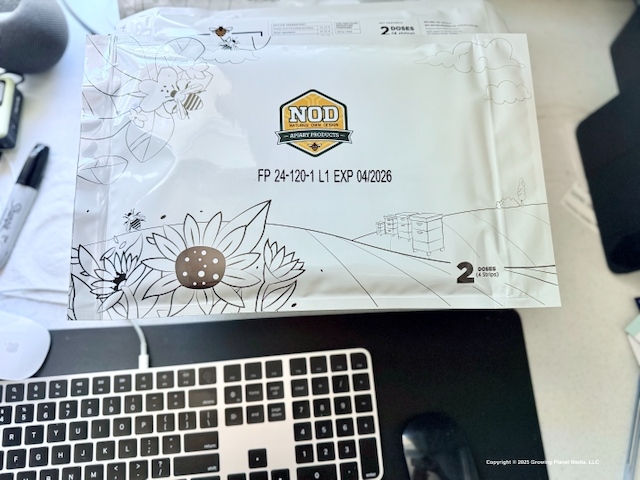2026 Starts Right Now

I’m often asked why we run so many episodes focused on varroa mites—guests, shorts, and even… blogs. I understand the question. As a beekeeper and content creator with a platform devoted to the news, information, and entertainment of beekeeping, I know there’s a whole world of fascinating topics that have nothing to do with varroa. In fact, for more than a century, beekeeping literature didn’t mention mites at all.
Yet here I am, writing about them again.
On my desk—here in the little rental apartment where I’m working—are 14 doses of FormicPro, ready to go in tomorrow. We’ve finally got a forecast calling for a week of temperatures under 85°F. (Beyond that? I wouldn’t put much faith in the long-range predictions anyway.) I’ve been monitoring and treating for varroa all year, but August is different. This is the month when, as soon as the honey harvest is off, my focus shifts to one central goal: keeping my colonies healthy through to next spring.
The 2026 beekeeping season began the moment I pulled my honey supers.
From now until next spring, everything I do is about giving my bees the best possible chance to make it through winter. As much as I like my local bee supply companies—and want to support them—I’d rather not buy bees next year. I’d rather be making splits and catching swarms, not cleaning dead-outs and smelling the sad, unmistakable odor of moldy, rotting bees. And the biggest obstacle to that goal? Varroa.
You’ve heard our podcast guests talk about winter bees. These are the bees born in fall that live through the long months until spring. Summer bees live just four to six weeks, but winter bees, with their larger fat bodies and unique physiology, are in many ways physically more like nurse bees. They’re essential for keeping the colony alive until the first pollen and nectar flows return. But if varroa populations are high now—at their annual peak in the northern hemisphere—those winter bees will emerge weak, deformed, and virus-laden. The colony won’t survive its first cold snap in December.
That’s why we’ve prepared a whole series of BTP Shorts on varroa treatments. There’s one to match just about every beekeeping style and philosophy. Check your mite levels, treat, and monitor. Then treat again if needed—maybe even rotate products. This is the only way to stay ahead of the threat varroa poses to your honey bees.
I look forward to the day when varroa are still around but no longer the management crisis they are today. Maybe then, we can devote fewer episodes to mites and more to… fall feeding.














